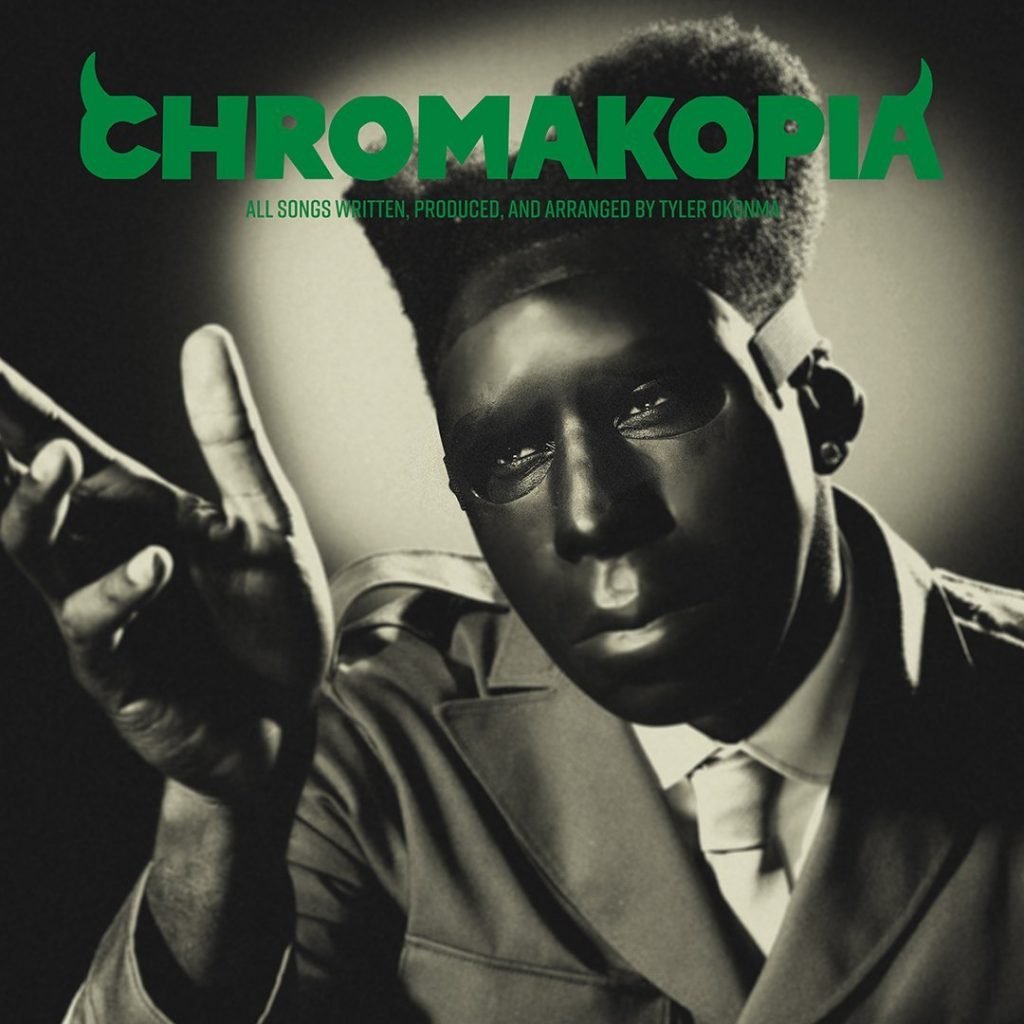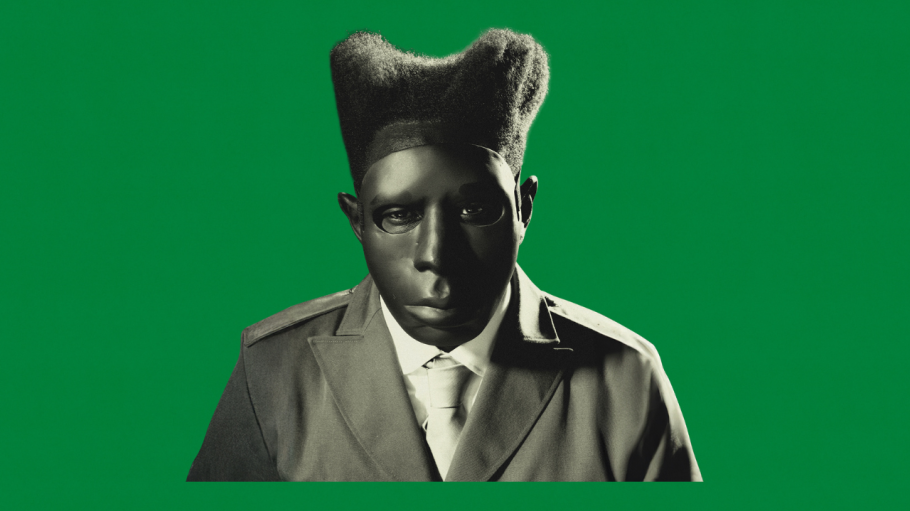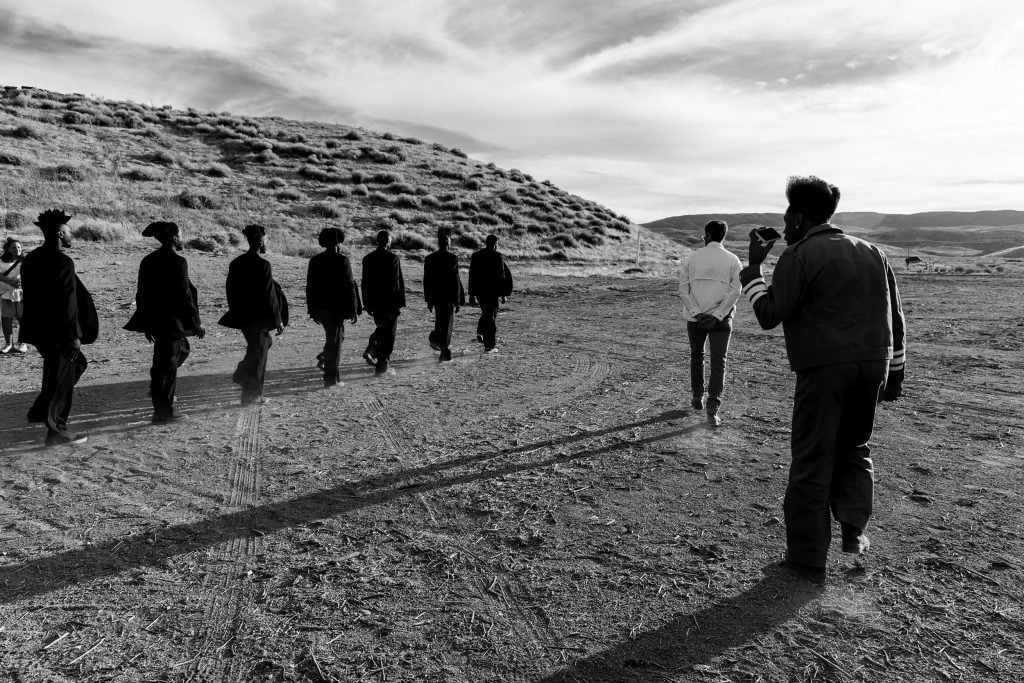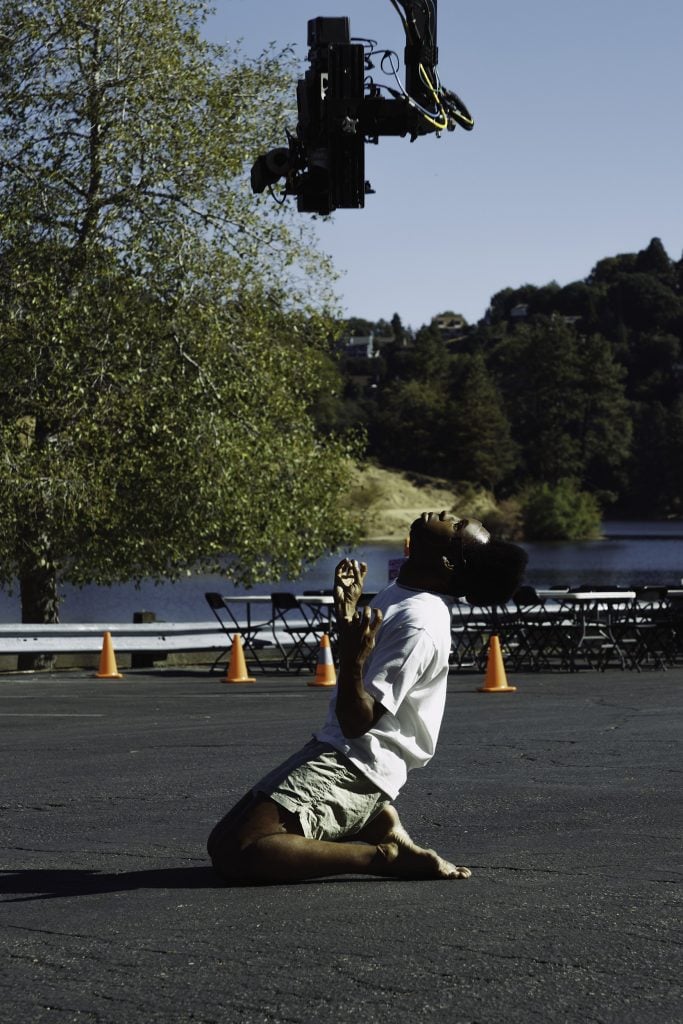Pop Culture
Behind the Noir Stylings of Tyler, the Creator’s ‘Chromakopia’ Album Art
Director of photography Luis Perez opens up about bringing the record's visual aesthetic to life.

At first glance, the sleeve for Tyler, the Creator’s new album Chromakopia conjures a classic throwback. In it, the rapper is decked out in a trench coat, one hand dramatically outstretched, with a sepia tone lending the entire image the theatrics of a 1950s film still. Yet something is amiss: Tyler’s face is almost entirely obscured by a mask, revealing only his eyes, which hold an earnest, melancholic gaze.
“It changes how you see Tyler, which was obviously very much a reason why he made it the way he made it,” Luis Perez, the director of photography behind the record cover, told me about the prop. “It makes the viewer really pay attention to what’s going on with him. It makes you want to go, ‘wait, what’s going on here? I’m unsettled by what I’m seeing.'”

Tyler, the Creator, Chromakopia tour art. Photo courtesy of Sony Music Entertainment.
That curious tension perhaps chimes with a musician who has made some bold, unpredictable swings in hip hop—and landed hits. Chromakopia marks his seventh solo album, on which he continues to make a mash of genres, from the synth-y flight of “Balloon” through to the jazzy soul of “Take Your Mask Off.” Like his previous outings, this one is accompanied by a visual aesthetic that’s as striking and layered as its contents.
We have Perez to thank for some of that. The Los Angeles-based photographer and cinematographer has been one of Tyler’s long-time collaborators, their joint efforts best seen in the flashy video for “OKRA” (2018) as much as singular sleeves for Igor (2019) and Call Me If You Get Lost (2021). Theirs is a partnership, Perez explained, built on a shared intuition and sense of play.
“We are pretty much in a space where we get each other creatively,” he said. “A lot of situations feel like we’re just two kids having fun, you know? As a creative, you don’t get to always participate in things that are fun and creatively enriching.”

Behind the scenes of the video shoot for Chromakopia. Photo: Luis Perez.
For Chromakopia, Tyler and Perez communicated as they always have: through visuals. This time, the musician brought to the table a series of black-and-white studio headshots from 1930s and ’40s Hollywood, including a screen test for an Alfred Hitchcock movie. “He wanted the cover to feel like it came from a from a film of that era,” the photographer explained.
To nail that style, Perez commanded huge continuous lights to illuminate the set and debuted his brand-new Hasselblad X2D 100C. Tyler’s other creative partner, Tara Razavi, who was instrumental in pulling together the production, arrived with the ceramic mask that was specially created for the star. He could hardly breathe while wearing it, but, as Perez described the look, “it’s special because it transcends.” The team got the shot toward the last three frames.

Behind the scenes of the video shoot for Chromakopia. Photo: Luis Perez.
That same approach translates seamlessly into the sepia-toned videos for Chromakopia‘s singles. “St. Chroma” sees a masked Tyler march a faceless group, in step with the track’s ratatat heartbeat, into a shipping container that explodes in technicolor. “Noid,” meanwhile, lands him amid a series of bewildering horror scenarios—with notable cinematic touchstones—before once again undergoing a tone shift.
“Tyler wanted it to feel surreal,” Perez said about the videos. “He was on this whole thing about Surrealism and creating a very unsettled experience.”
View this post on Instagram
For “Noid,” in particular, the musician drew up loose storyboards, which Perez further interpreted in terms of action and camera movement—in ways, the DP noted, that were “not usually that linear.” (Of Tyler’s drawings, he added: “I wish people could see his frames! I always bust his balls about it, like, ‘bro, what is this?'”)
Perez once more unearthed a host of cinematic references from Hitchcock to film noir, which show up most prominently in a sequence where Tyler races a Ferrari down a stretch of road, his face theatrically lit in the rearview mirror.
Because Tyler planned for the video to transition into color, Perez had to consider what a film noir would look like in full flush. For that, he took notes while re-watching Road to Perdition, Sam Mendes’s 2002 thriller starring Tom Hanks.
“The DP [director of photography] on that film was known for noir and this was his first film in color that felt the same way,” he explained. “I thought of it from that standpoint, once we got into production, as far as how the sets will look and the certain colors that would be in the sets.”

Behind the scenes of the video shoot for Chromakopia. Photo: Luis Perez.
And Perez—who has lensed the likes of Pharrell Williams, Jennifer Lopez, and Jay-Z, among others—knows too well the power of marrying such visuals to music. In our conversation, he brings up album covers by a host of artists from L.L. Cool J and Metallica to Marvin Gaye and Michael Jackson, all of which have struck a chord.
“No matter what you’re doing, it has to resonate, whether it’s color, tone, composition, or certain themes, in creating the visual representation of that music,” he noted. “I think the best work is when that relationship gels and it feels organic and cohesive. You get a better understanding of the music sometimes. The visual makes the record interesting.”
As for his own working relationship with Tyler? Perez offers a fine and fitting musical analogy: “It’s like jazz in the mosh pit.”





